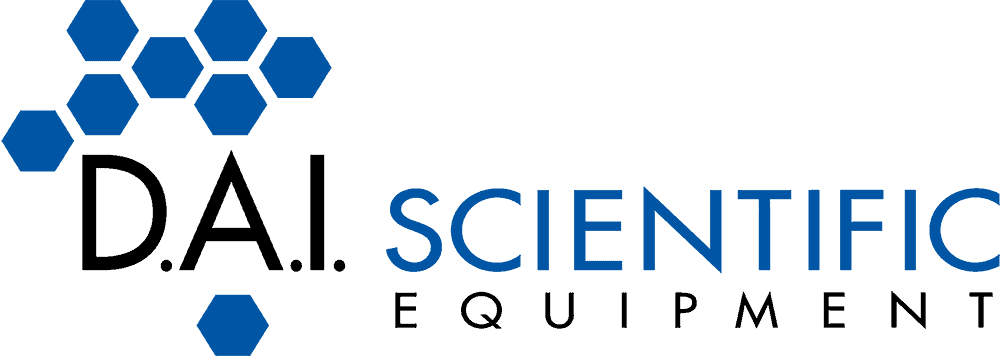The COVID-19 pandemic brought the significance of disease research, preparation, prevention and reporting front and center — though infectious diseases have been around for hundreds of years. In fact, the first coronavirus was identified in the 1960s but the Cleveland Clinic estimates that they have been around for centuries.
But much has changed — and will continue to change — including the latest medical advances and methodologies surrounding emerging infectious diseases. Hospitals, organizations, programs and departments around the world are now wholly devoted to the prevention, diagnosis, treatment and research of infectious diseases.
Recently, the Centers for Disease Control and Prevention (CDC) hosted the 11th International Conference on Emerging Infectious Diseases, held every two-to-three years, and the Gates Foundation pledged $912 million to the Global Fund to help fight malaria, tuberculosis and AIDS.
As we know, there are many essential components to emerging infectious disease research — skilled doctors and epidemiologists, researchers, scientists, grants and funding, proper scientific equipment, new technologies and more. We’ve compiled a variety of important emerging disease statistics and trends for your convenience.
Note: The information in this report is updated annually to reflect the latest statistics and trends.
Types of Infectious Diseases [+ Examples]
Let’s first review the difference between “infectious disease” and “emerging infectious disease.”
- Infectious diseases “are disorders caused by organisms — such as bacteria, viruses, fungi or parasites.”
- Emerging infectious diseases/pathogens have “newly appeared in a population or have existed but are rapidly increasing in incidence or geographic range.” They may also be caused by one of the National Institute of Allergy and Infectious Diseases (NIAID) Category A, B, or C pathogens.
Infectious diseases are caused by harmful organisms that enter your body. Here are some common examples detailed by the Cleveland Clinic:
- Infectious diseases caused by viruses — common cold, the flu (influenza), COVID-19, stomach flu, hepatitis and respiratory syncytial virus (RSV)
- Infectious diseases caused by bacteria — strep throat, salmonella, tuberculosis, whooping cough, sexually transmitted diseases (STDs), urinary tract infections (UTIs) and E. coli
- Infectious diseases caused by fungi — ringworm, vaginal yeast infection, thrush
- Infectious diseases caused by parasites — hookworms, pinworms, giardiasis, toxoplasmosis
The Most Common Infectious Diseases
The University of Rochester Medical Center and the National Foundation for Infectious Diseases list the following common infectious diseases:
| Chickenpox | Chronic fatigue syndrome | Common cold |
| Coronaviruses | Dengue | Diphtheria |
| Ebola | Flu (influenza) | Hepatitis |
| Hib disease | HIV/AIDS | HPV |
| Japanese encephalitis | Measles | Meningococcal disease |
| Monkeypox | Mumps | Norovirus |
| Pneumococcal disease | Polio | Rabies |
| Respiratory syncytial virus (RSV) | Rocky Mountain spotted fever | Rubella (German measles) |
| Salmonella infections | Severe Acute Respiratory Syndrome (SARS) | Sexually transmitted diseases (STDs) |
| Shingles | Tetanus | Toxic Shock Syndrome |
| West Nile Virus | Whooping cough | Zika |
This is not comprehensive; the list of confirmed diseases is quite long. The San Francisco Department of Health features an Infectious Disease A to Z resource that details additional types, including lesser-known diseases such as psittacosis, ciguatera fish poisoning and listeriosis.
The Most Common Emerging Infectious Diseases
According to Johns Hopkins Medicine, common emerging infectious diseases include:
- HIV infections
- SARS
- Lyme disease
- E. coli
- Hantavirus
- Dengue fever
- West Nile virus
- Zika virus
Diseases may reemerge “because of a breakdown in public health measures for diseases that were once under control. They can also happen when new strains of known disease-causing organisms appear.”
How we behave can also affect whether diseases reemerge. For example, “overuse of antibiotics has led to disease-causing organisms that are resistant to medicines. It has allowed a return of diseases that once were treatable and controllable.”
Emerging Infectious Disease Statistics
History
- The National Institute of Health (NIH) was founded in 1887.
- The flu pandemic from 1918 to 1920 caused more than 550,000 deaths in the United States and more than 20 million deaths around the world.
- The CDC opened on July 1, 1946 as the Communicable Disease Center with a primary mission of preventing malaria from spreading across the United States.
- The National Microbiological Institute was created in 1948 and merged with the Rocky Mountain Laboratory, the Biologics Control Laboratory (both of which dated back to 1902) and the Division of Infectious Diseases and the Division of Tropical Diseases of NIH. The organization became the National Institute of Allergy and Infectious Diseases in 1955.
- Monkeypox was discovered in 1958. This outbreak affected monkeys that were kept for research. The first case of a human contracting the virus was in 1970 in the Democratic Republic of Congo.
- In 1980, the World Health Organization announced that smallpox was eliminated due to vaccinations.
- The National Museum of American History features a display and timeline detailing the United States’s 200+ year history in researching, treating and preventing infectious disease.
- The Walter Reed Army Institute of Research announced the creation of the Emerging Infectious Diseases Branch (EIDB) in 2018 “with the explicit mission to survey, anticipate and counter the mounting threat of emerging infectious diseases of key importance to U.S. forces in the homeland and abroad.”
- COVID-19 deaths have reached 5.5 million — and the number is still growing.
Cost and Economic Impact
-
- The global infectious disease diagnostics industry is booming and expected to reach a staggering $37.9 billion by 2028.
- The International Monetary Fund expects COVID-19 will cost the global economy $12.5 trillion through the year 2024.
- “Poorer nations and poor individuals in all nations are, indeed, most vulnerable to the economic impact of infectious disease epidemics. Inequalities affect the spread and economic impact of epidemics among nations, while also hitting lower-wage individuals particularly hard. Those individuals often cannot work from home (and frequently rely on public transportation, magnifying their risk), have less access to healthcare, live in poorly-ventilated or crowded conditions, and are susceptible to a rise in automated production that would also increase global inequality.” [World Economic Forum]
Trends and Outbreaks
- The CDC manages an “outbreaks” section on the homepage of the National Center for Emerging and Zoonotic Infectious Diseases (NCEZID). All-time top outbreaks are: U.S. monkeypox outbreak, salmonella from backyard poultry and salmonella from buying pet turtles.
- The CDC Current Outbreak List for the United States includes: E. coli from an unknown food source, Salmonella infections from buying pet turtles, Listeria infections from recalled ice cream, Salmonella outbreaks linked to backyard poultry (chickens and ducks) and a number of children with acute hepatitis (the cause is unknown.)
- Current international outbreaks include monkeypox, COVID-19 and Ebola.
- A zoonotic disease is caused by germs spread between people and animals.
- Some types of infectious diseases affect the entire body, such as malaria, measles and HIV. Others just infect one system (or organ), such as tuberculosis, which affects the respiratory tract.
- “Deaths from the infectious diseases HIV/AIDS and tuberculosis have fallen significantly in recent years, and they no longer appear on the list of top ten causes of death globally. However, these diseases are still a leading cause of death in low-income countries. Malaria is another infectious disease that is a top cause of death in low-income countries. These three diseases are due to single infectious agents.” [Baylor College of Medicine]
- The top 10 leading causes of death in low-income countries are:
- 1. Neonatal conditions
- 2. Lower respiratory infections
- 3. Heart disease
- 4. Stroke
- 5. Diarrheal diseases
- 6. Malaria
- 7. Road injury
- 8. Tuberculosis
- 9. HIV/AIDS
- 10. Cirrhosis of the liver
By the Numbers
- Three out of four new or emerging infectious diseases in people come from animals.
- COVID-19 is the third-highest leading cause of death in the United States behind heart disease (#1) and cancer (#2).
- Approximately 38 million people have died as a result of HIV/AIDS. More than 37 million people are currently infected with the disease.
- As of September 2022, there have been more than 25,000 confirmed cases of monkeypox/orthopoxvirus in the United States.
Infectious Disease Resources
- Center for Emerging and Re-Emerging Infectious Diseases — University of Washington
- World Health Organization — Infectious Diseases
- Infectious Disease Care — Mayo Clinic
- Infectious Disease Society of America
- International Society for Infectious Disease
- Association for Professionals in Infection Control and Epidemiology
- Association of Nurses in AIDS Care
- American Public Health Association
- Fred Hutch Vaccine and Infectious Disease Division
- National Institute of Allergy and Infectious Diseases
- Mayo Clinic Division of Infectious Diseases
- Pediatric Infectious Diseases Society
- Mount Sinai — Infectious Diseases
- CDC — Emerging Infectious Diseases
- What Are Emerging Infectious Diseases? — Baylor College of Medicine
- Infectious Disease Data — CDC
This report was brought to you by D.A.I. Scientific, a one-source laboratory equipment provider that delivers high-quality products and services to the pharmaceutical, educational, biotechnology and clinical industries.



